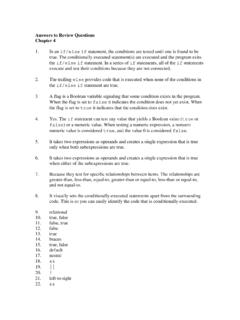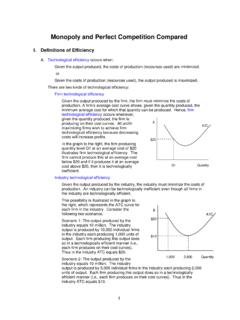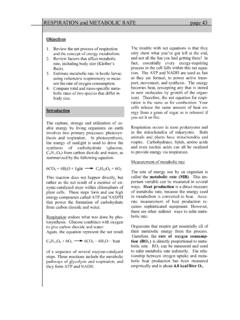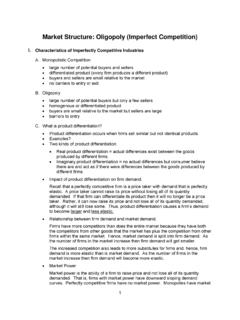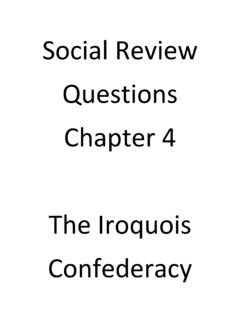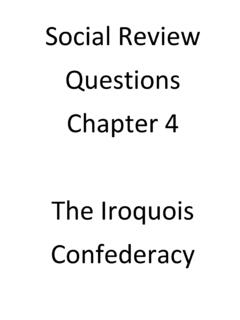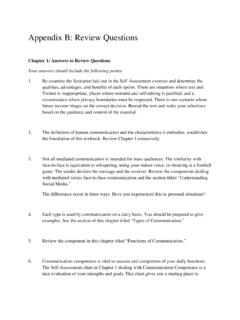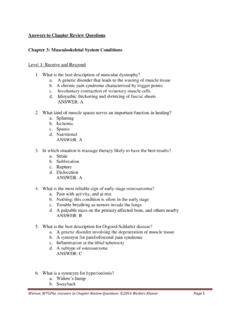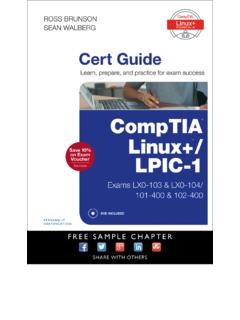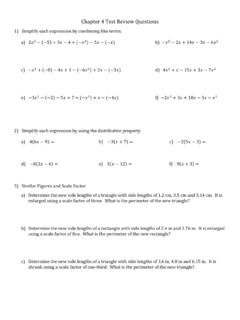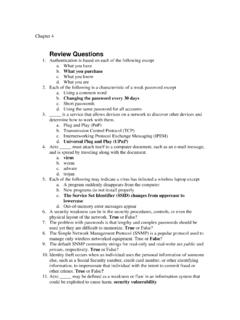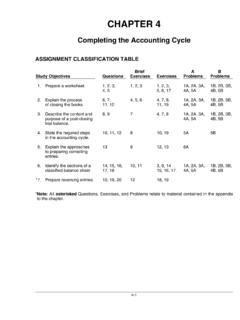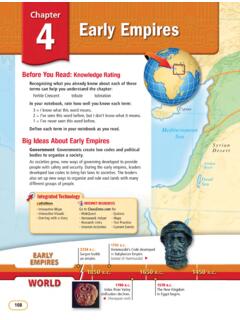Transcription of Chapter 6 - Answers to Review Questions
1 Answers to Review Questions Chapter 6 1. Because they are created in memory when the function begins execution, and are destroyed when the function ends. 2. An argument is a value passed to a function. A parameter variable is a variable local to the function which receives the argument. That is to say, the argument's value is copied into the parameter variable. 3. Inside the parentheses of a function header. 4. If the argument is passed by value, nothing needs to be done. The function cannot access the argument. If the argument is passed by reference, the parameter should be defined with the const key word. 5. Yes. The first argument is passed into the parameter variable that appears first inside the function header's parentheses. Likewise, the second argument is passed into the second parameter, and so on. 6. With the return statement. For example, the following statement returns the value in the variable x.
2 Return x; 7. It makes the program easier to manage. Imagine a book that has a thousand pages, but isn t divided into chapters or sections. Trying to find a single topic in the book would be very difficult. Real-world programs can easily have thousands of lines of code, and unless they are modularized, they can be very difficult to modify and maintain. 8. It would enable a function to retain a value between function calls. For example, it can keep track of the number of times the function has been called. 9. A function such as the following could be written to get user input. The input is stored in the variables that are passed as arguments. void getValues(int &x, int &y) { cout << "Enter a number: "; cin >> x; cout << "Enter another number: "; cin >> y; } 10. header 11. void 12. definition, prototype 13. arguments 14. parameters 15. value 16.
3 Prototype 17. local 18. global 19. global 20. 0 21. local 22. static 23. return 24. default 25. last 26. constant 27. reference 28. & 29. reference 30. exit 31. parameter lists 32. showValue(x); 33. double half(double num) { return num / 2; } 34. result = cube(4); 35. void timesTen(int num) { cout << (num * 10) << endl; } 36. display(age, income, initial); 37. void getNumber(int &num) { cout << "Enter a number in the range 1 100 : "; cin >> num; while (num < 1 || num > 100) { cout << "That number is out of range.\n"; cout << "Enter a number in the range 1 100 : "; cin >> num; } } 38. true 39. false 40. true 41. true 42. false 43. true 44. true 45. false 46.
4 True 47. true 48. true 49. true 50. false 51. true 52. true 53. false 54. false 55. true 56. The data type of value2 and value3 must be defined. The function is declared void but returns a value. 57. The assignment statement should read: average = (value1 + value2 + value3) / ; The function is defined as a float but returns no value. 58. width should have a default argument value. The function is defined void but returns a value. 59. The parameter should be defined as: int &value The cin statement should read: cin >> value; 60. The functions must have different parameter lists.
